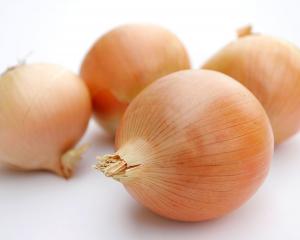Always one for the easy way, Gillian Vine opts for celery grown over a compost trench.
The simplest - and probably oldest - method of composting was to dig a trench, fill it with anything that would rot down, then cover it with earth and leave it.
Probably by accident, it was found that crops grown on top did very well.
As sophisticated composting bins became available, the trench method was largely abandoned but is slowly returning to favour, partly because it is free - all you need is a spade to dig a ditch - and partly because it is simple, as no turning is needed.
Some vegetables do very well planted on top of a trench of unrotted or partly composted material, among them Jerusalem artichokes, yams, leeks, silverbeet, lettuces, cabbages and cauliflowers.
What is even better is that, except for artichokes, they all need similar levels of soil acidity with a pH of 6.5 to 7.0.
This means sprinkling the contents of the ditch with a handful of lime per metre to make the soil more alkaline. It also means that, if your trench is long enough, all these vegetables can be packed in together.
As they grow, their roots reach into the goodness below and as well as drawing nourishment, they help break it down, so that next season you have good, rich soil with minimal effort.
For some years, I have used this method to grow celery.
It likes richness, which is provided by the composting material under the ground, which can be supplemented with horse or cow manure, although these days I rely entirely on the contents of the kitchen compost bin.
This battered $50 black plastic container is sited reasonably handy to the back door, unlike the main compost bins at the bottom of the garden, a long hike if it is raining.
Once or twice a year, the kitchen bin is emptied and the contents tipped into a trench, given a general sprinkling of lime and blood and bone, then (to the disgust of our resident blackbirds) covered with the soil that was dug out.
At the beginning, the vegetable garden soil was so heavy that a layer of gypsum was put on the bottom of the trench to help break down the clay and it worked well.
As important as rich ground is a steady supply of moisture or the celery will be stringy. Again, the composted material tends to hold moisture but drains well, another plus.
It also keeps the roots cool, reducing the likelihood of the celery ''bolting'' to seed in hot weather.
Thankfully, modern celery varieties do not need to be earthed up or have paper wrapped around them to blanch the stems, although I'm told some gardeners do use rhubarb forcing pots for early, pale-stemmed winter crops.
Growing celery
- Celery plants can be bought from garden centres or grown from seed. The drawback of seed is that it can be slow to germinate or may fail if the weather is too warm (above 20degC). Do not cover the seed, as light helps it germinate. Young plants should be in the ground by Christmas. Plant them about 30cm apart in a block rather than rows so that, as they grow, they shade one another, which helps keep their roots cool and the stems paler.
- When celery is grown in open ground, mulching helps prevent bolting.
- If your celery crop is so good you've a surplus, it freezes well but once frozen loses its crispness, making it suitable only for soups, stews and casseroles.











